The director speaks exclusively to StarWars.com on the five-year anniversary of his gritty standalone film.

It’s not typical that a major studio releases a tentpole film in which all the heroes die at the end. But then, Rogue One wasn’t a typical Star Wars movie. Released December 16, 2016, Rogue One: A Star Wars Story told the tale of how the rebels stole plans to the Death Star, leading directly into the classic Star Wars: A New Hope. It was less space fantasy, more space war, with a grittier tone to match its story of ultimate sacrifice. The film proved to be a critical and box-office hit, and remains a fan favorite of the modern Star Wars era; to wit, Andor, chronicling earlier missions of Rogue One’s rebel spy with a heart, arrives on Disney+ in 2022. To mark Rogue One’s fifth anniversary, director Garth Edwards spoke with StarWars.com about sneaking away to his first Lucasfilm meeting, bringing back Tarkin and Leia with digital effects, and why Rogue One felt like “something we’d borrowed from George.”
StarWars.com: I don’t know if you remember -- I might have done your first Rogue One interview ever, for StarWars.com. A little video piece.
Gareth Edwards: I think I ended up talking about having gone to Tunisia and stuff.
StarWars.com: Yes.
Gareth Edwards: I might have embarrassed myself with a few Darth Vader impressions or something.
StarWars.com: Yes, you did. [Laughs]
Gareth Edwards: There you go. Yeah, I do remember.
StarWars.com: It’s good to talk to you again. To start, I wanted to ask, five years later, what comes to mind when you think of Rogue One?
Gareth Edwards: [Laughs] It’s weird because I’ve honestly not sat and watched the film since it came out. You hear filmmakers say things like that and you think, “You’re lying. Of course you have.”
I’ve seen lots of bits of it. It’s appeared on TV and I’ve kind of watched 20 minutes here and there. I remember having to watch it a lot towards the end, especially with the publicity, and we had various premieres and things. So my memory -- it’s going to be an interesting conversation, because I’ve not sat down and talked about it in depth for what feels like a long time. Maybe you can pull memories out of me about it.

Obviously, it’s a dream come true. I know there’s millions of people like this, that love Star Wars. But this is kind of the reason I got into filmmaking. If someone had told me when I was six that I was one day going to get to not just make a Star Wars film, but make a Star Wars film that connected to the film that I watched over and over every morning before I’d go to school?
You have to pinch yourself. You start to wonder whether this is all actually virtual reality. It seems too good to be true, like I’m playing the game version where I get to make a Star Wars film. It’s not the sort of thing that should happen to you in your career, like even the best version of where your career could go. I feel very lucky and I consider it very sacred territory.
I remember when I first met with [Lucasfilm’s] Kiri Hart at the very beginning of it all, just snuck in for a very secretive meeting. I think they were meeting with loads and loads of filmmakers, like it was [when] The Force Awakens was beginning. I don’t think anyone had announced the title or anything. We knew there was a Star Wars film happening and probably more to come. At the time I was finishing Godzilla, and they were at Disney, and you can walk from Warner Bros. to Disney in about 10 minutes. I was nervous about telling anyone that I was going for a meeting at Lucasfilm, because if things went well I’d be doing the Godzilla sequel, and so I pretended I had to get some food or something. I just went down and met with Kiri Hart down the road.
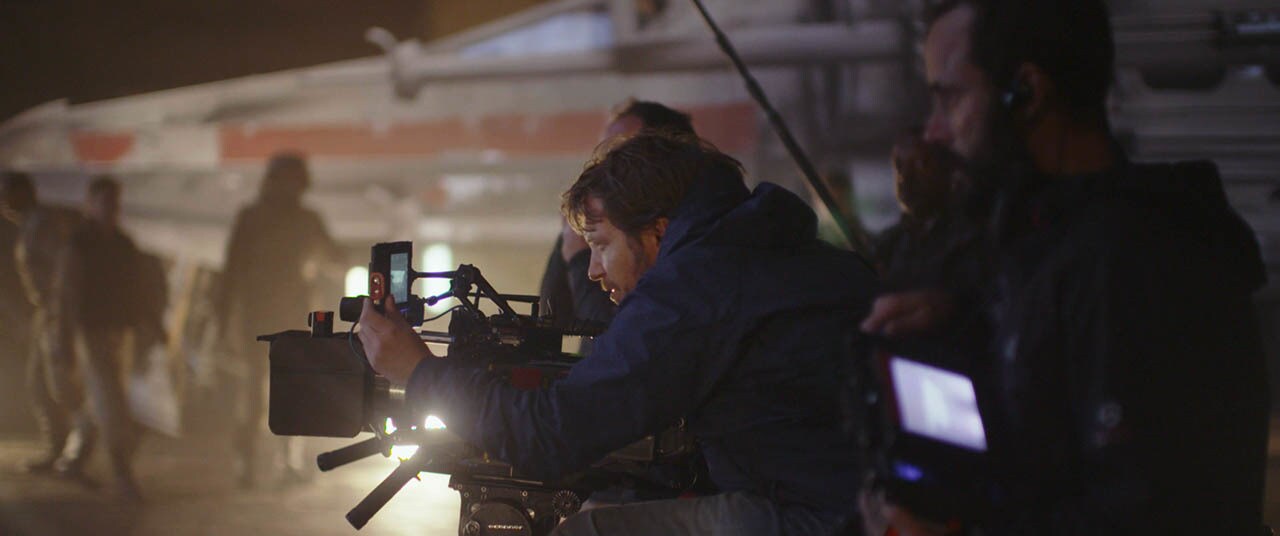
I had this great meeting, but part of me was sitting there thinking -- when they started talking about some of the things they wanted to do -- I just remember thinking, “A) They’ll never offer this to me, and B) I don’t think I’d want to do it because you’ve got to be so careful with this stuff.” It’s so important to so many people, including myself. She said, “I’ve got two ideas I’d like to send you that I think you’d be interested in,” and she sent me one. I remember getting this email and thinking, I’ve got to sit down and really concentrate and savor this moment. This is the only time I’ll be sent an idea for a Star Wars movie from Lucasfilm.
So I cleared everything, I didn’t do anything that Saturday, and I kept everything away. I sat down, opened just a page or even a few paragraphs of description, and there was this one idea which was very, very cool and very good, but it wasn’t for me. I just felt like I’m not the guy to do that.
And then there was another idea as well, which obviously turned out to be John Knoll’s concept for a Star Wars film. I started reading it, and I was like, “Okay, where is this going? What is this? Hang on, hang on.” And then the last paragraph, it all tied in with A New Hope. I had this love-hate relationship instantly where it was like, “They can’t do this film! They shouldn’t do this film, this is like hallowed ground, you can’t! You’re not allowed to!” And the other part of me was like, “Wait a minute, am I being considered for this? I have to do this! There’s no way I can walk away from this. But hang on, no one should do this, but I have to do it!”
I was really torn. I wrote back to Kiri saying, “I think this would be an amazing idea for a Star Wars film, but are you seriously going to do this? Or is it just like, spaghetti at the wall kind of stuff?” And she was like, “No, no, no. This is what we want to do, potentially next.”
Then I figured, they’re talking to maybe 20 filmmakers and I’m one of them, so I probably won’t even make the cut. I went in for a few more meetings, met with Kathy [Kennedy, Lucasfilm president], and it was all going very well. And then at one point I thought, I’m just going to ask the question just for my own piece of mind. I said, “How many other filmmakers and directors are you talking to about this?” And they were like, “Oh, none.” I was thinking, “Oh, God, are you crazy?” [Laughs] And then for whatever reason, I got to do it.
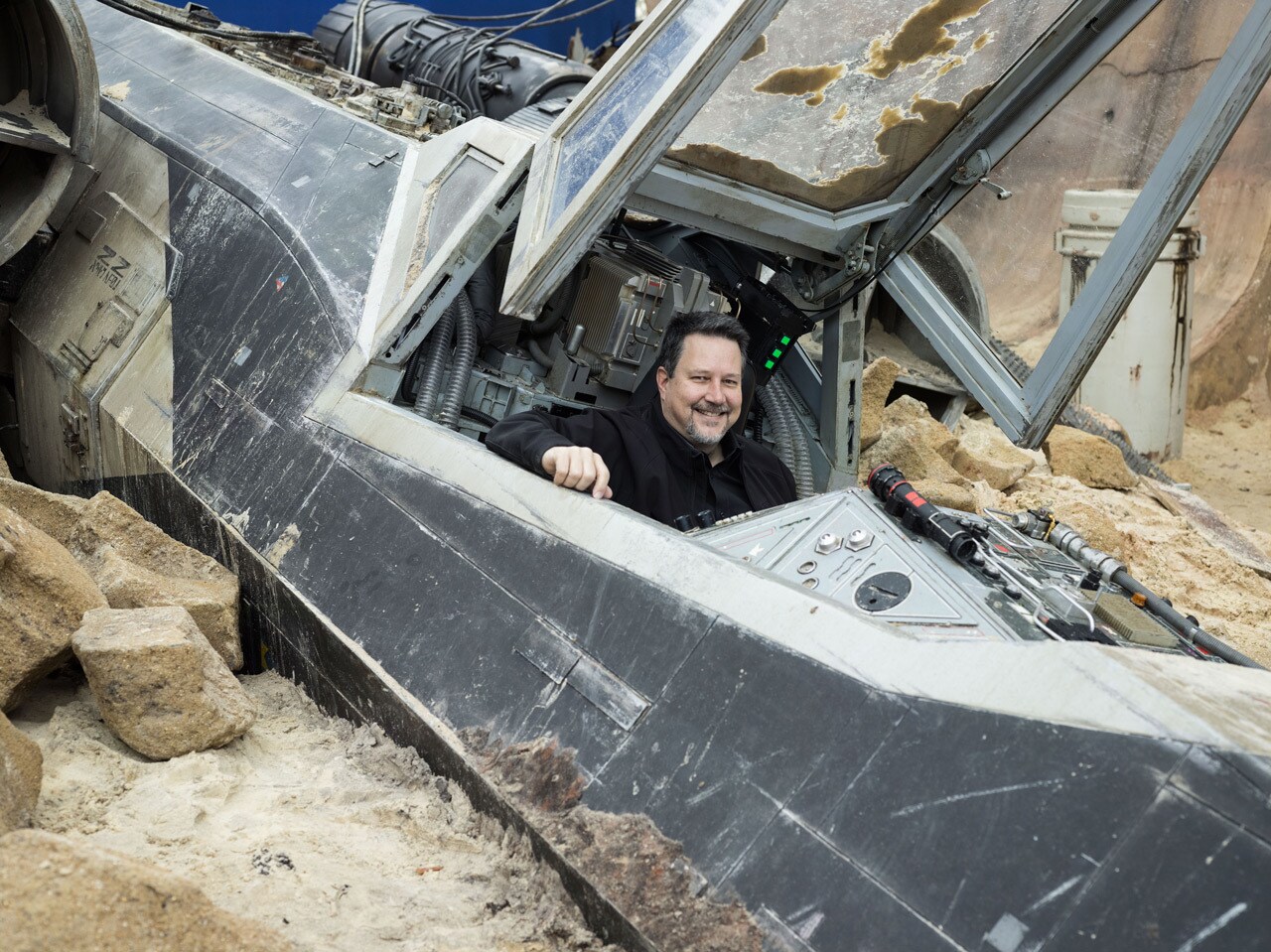
John Knoll was a hero of mine growing up, getting into visual effects. I always wanted to direct films but I came through -- at some point in the industry, if you’re not given a directing gig straight from film school, you have to pick a career. And I picked visual effects. I sat and watched the making of The Phantom Menace to death. I savored everything there was about Industrial Light & Magic. And obviously a lot of that material gravitated to John Knoll.
So I felt like he was a massive hero of mine. Then I had to Zoom with him to kind of get the gig. Because if he didn’t like me, they’d obviously go with someone else. So I knew there was a lot of pressure on this [meeting]. And I can’t remember any of it. I can’t remember how it went. I remember being nervous.
I had briefly met him in passing at Warner Bros. He was there for a screening of Pacific Rim and we got invited to it because we were doing Godzilla. And at the end everyone’s going up to Guillermo del Toro and trying to speak to him. All I wanted to do was speak to John Knoll. I went up to him and introduced myself. I sounded like such a geeky fanboy and I was a bit embarrassed about it. He drove off in a golf cart. I was like, “That was it, that was my meeting with John Knoll, I can die happy now.” And then I didn’t realize that this was all going to kick off.
It never got old with John. You meet a lot of really super smart people in this industry, but John is truly like, a genius. His résumé proves that, but he has such a fascinating mind. To be the guy that A) with his brother, came up with Photoshop, B) then did all that groundbreaking work on all the digital breakthrough films that changed cinema, and then C) to come up with this idea for a Star Wars movie. And then I get invited to the party. It was pretty incredible.
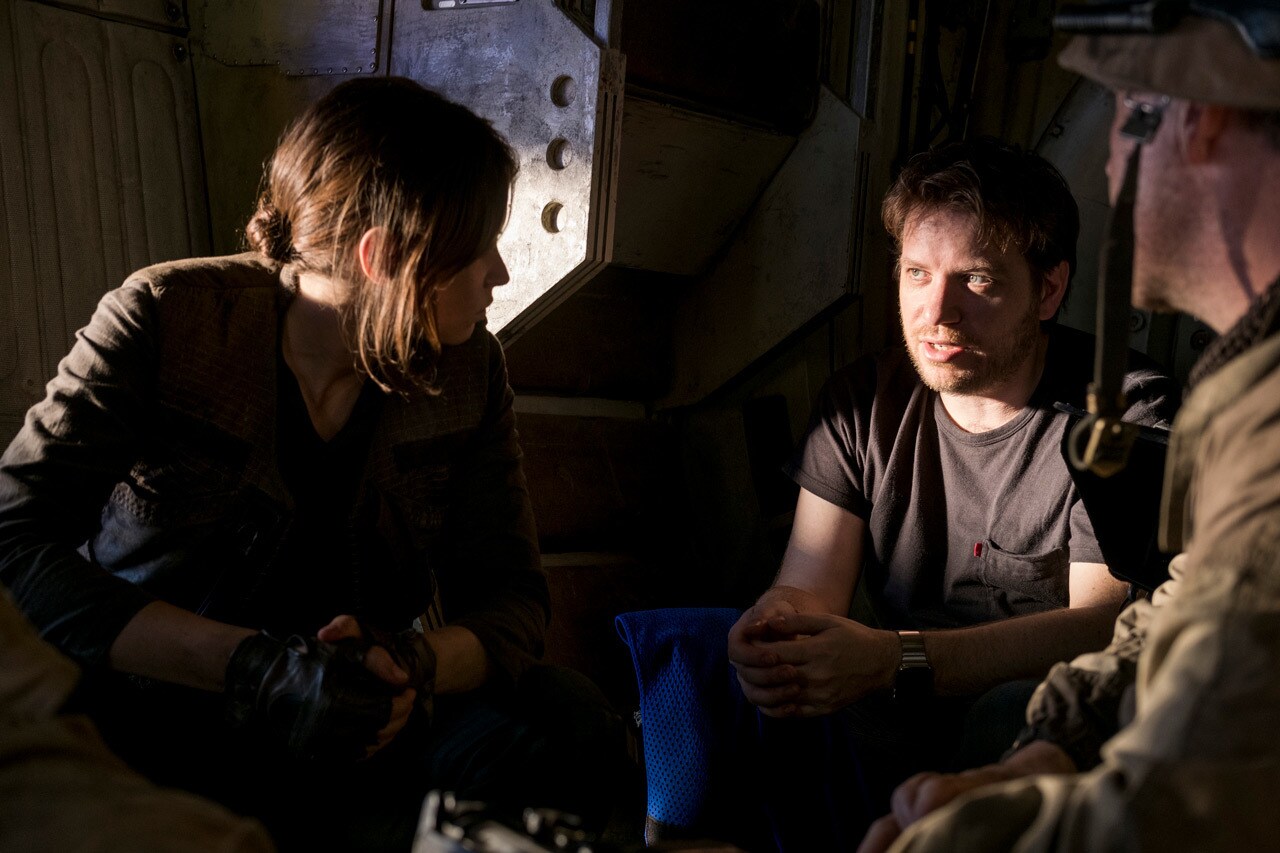
StarWars.com: It was only the second film in this new wave of Star Wars productivity at that time, and there had never been a Star Wars spinoff like this. I’m wondering if there was pressure that came from that, and if that ever got to you during production.
Gareth Edwards: There was pressure. Obviously, there’s pressure at all time, every day in every way, so 1000 percent.
I got some strange analogies for it that probably don’t make sense in print, but no one can put as much pressure on me than I would put on myself. It’s a strange thing to say, but for a whole generation Star Wars was kind of a semi-religion. I think in the past, kids would grow up and be told campfire stories, or spiritual, mythical stories, you know, and religious stories about the world and fantasy ideas that speak about good versus evil. It really resonates with you as a child. Those stories kind of grew into religion over thousands of years. [Star Wars] took the place of a sort of spiritual foundation in a lot of kids, weirdly. Star Wars was a very profound thing, I think, for a lot of us.
I felt a lot of pressure all the time, but I also felt like, if I had one specialist subject in my life, it’s probably Star Wars: A New Hope. And if I had one thing that I always wanted to do more than anything else, it’s make films. And so I felt internally confident that I knew what I wanted this film to be, but I wasn’t sure at all that anyone else would want it to be that. That’s probably where any doubts would kick in.
There’s constant pressure. There’s pressure making just a tiny movie for yourself. The first film I ever did, for no money, [I was under] constant pressure. But making Star Wars, you kind of knew like, this is all or nothing. Everyone is going to see this and they’ll know about it. The sort of pressure to not [mess] it up was probably the most it’ll ever be on any movie you could ever make.
StarWars.com: The first time we talked, you were in pre-production. I don’t think this made the final cut of our interview, but you had talked about wanting to push forward and take chances with Rogue One, because if you didn’t then you weren’t creating in the spirit of George Lucas. After I saw it, I felt that with the digitally created performances of Tarkin and Leia, you were definitely pushing forward. Tell me about the decision to do that and if you were worried about it at all.
Gareth Edwards: Yeah. I think at some point we put a little chart up on the wall, which was what were the characters we could have in this movie that exist in this timeline. Initially in your brain you think, “Oh, this is going to be every Star Wars character you can think of.” But when you go through it, a lot of them are out of bounds, because either Lucasfilm were developing another film or a show, or something else was going on with those characters and they didn’t really want them in our film so much.
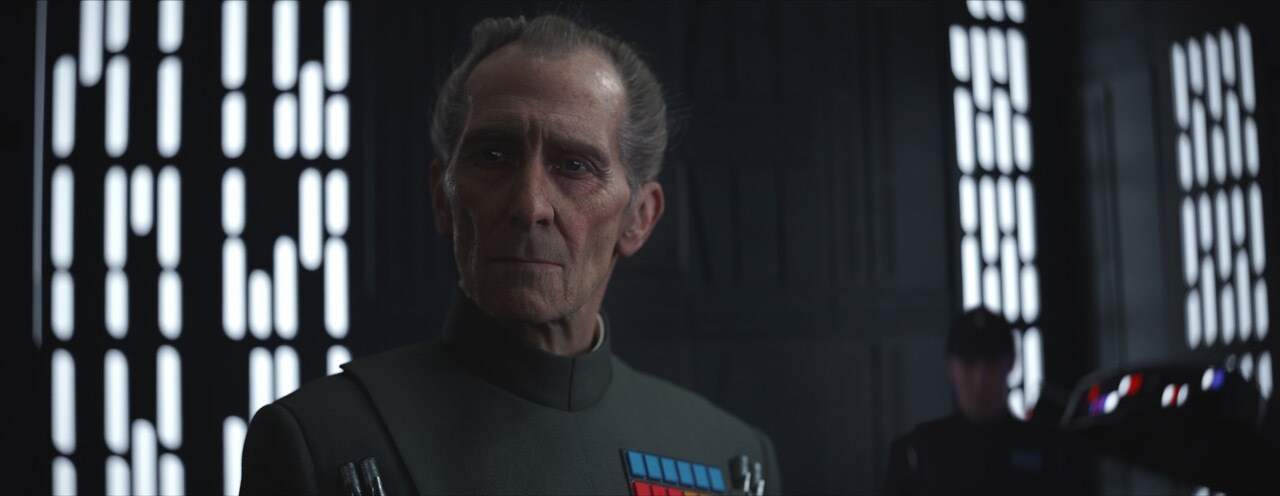
Tarkin was an obvious [choice] -- there’s no way you can tell this story and not have him in at least the periphery of the scenes that were going on, if not front and center. So he was always going to be mentioned, possibly seen, glimpsed, a little moment where you see him revealed somewhere slightly or at least understand that that’s probably him at the end of the corridor. But as we developed the script more and more, it became like, “He needs to be a proper character in this film for this to work.”
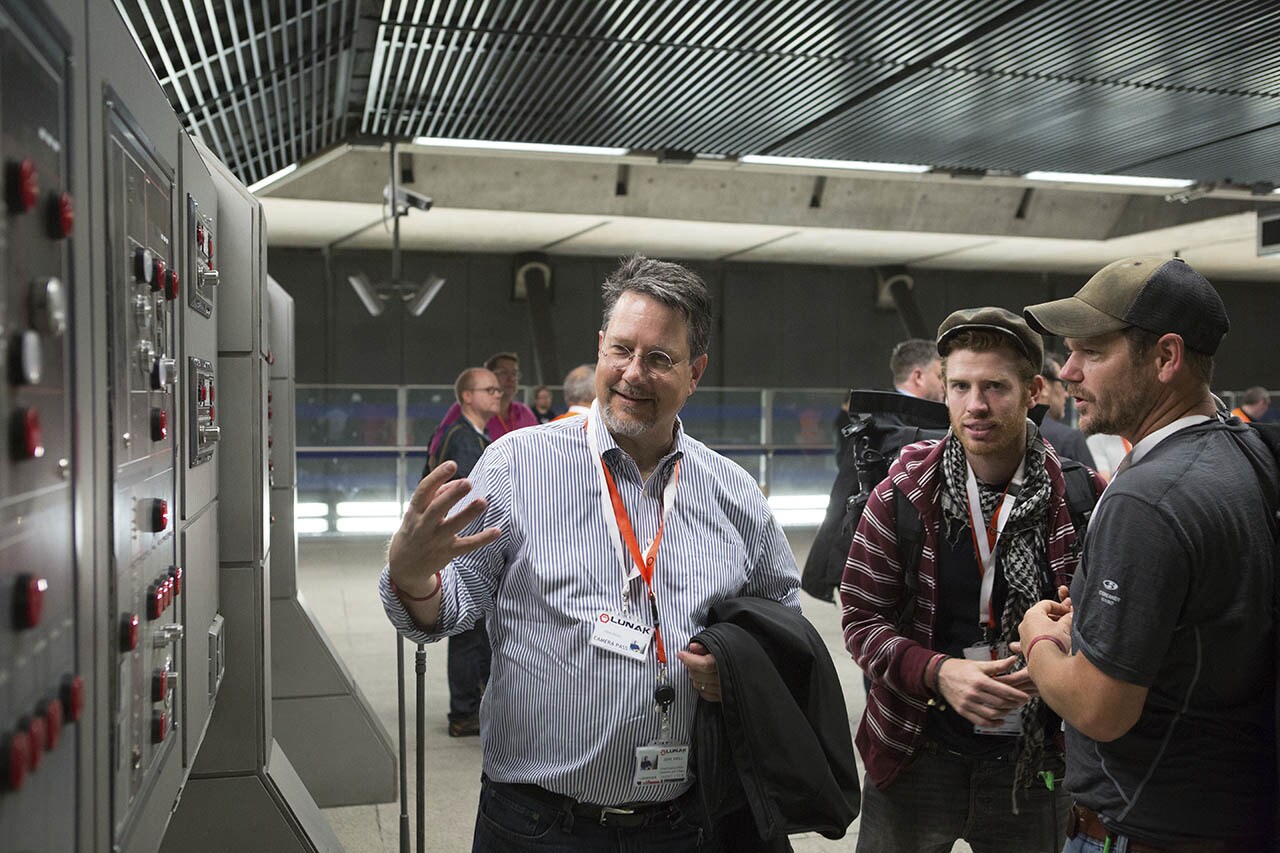
So we would obviously talk to John and the team and say, “Is this possible? Is this crazy? Should we steer away from it?” And John would always light up and be like, “No, this is exactly what ILM is about. This is why we exist. Go for it.”
So I felt very encouraged. They were sort of excited about the idea of bringing Tarkin into the movie. We always knew there was probably going to be a Leia shot in some form somewhere, right at the end of the film, at least. So they had that technical hurdle to figure out.
When you make these films, you have to do what’s called a turnover to ILM, where you basically give them shots to work on. The first one we ever did was Princess Leia. We turned it over during filming. It was the very first thing we gave them and it was the very last shot they delivered at the very end of the whole process. So they, in theory, worked on that shot for nearly a year and a half or something. I don’t know if it really was that, but that’s technically what it felt like.
And Tarkin, they had been doing things like that in other movies, and they had been getting more and more confident with digital humans. It just felt like, “We have to do this.” It’s kind of like, you’re making a film with ILM, you wanna do at least one thing that’s never been done before or feels a bit scary, a bit risky.
It was a fascinating journey. It wasn’t as simple as you have an actor play Tarkin and then you just digitally replace the performance with Peter Cushing’s face. It became very interesting, and the same with Darth Vader, as well. There were a lot of clues, subconsciously to the viewer, that let you feel that this is the original New Hope, which included things like lighting. [Director of photography] Greig Fraser, who’s a master at lighting, he would have preferred to have done a different kind of lighting on Tarkin for a lot of the shots. But we noticed that if we did a more modern take on that, it didn’t feel like him. We had to sort of dial it back to the way they lit scenes in A New Hope, in the late ‘70s. And then it would start to feel more real.
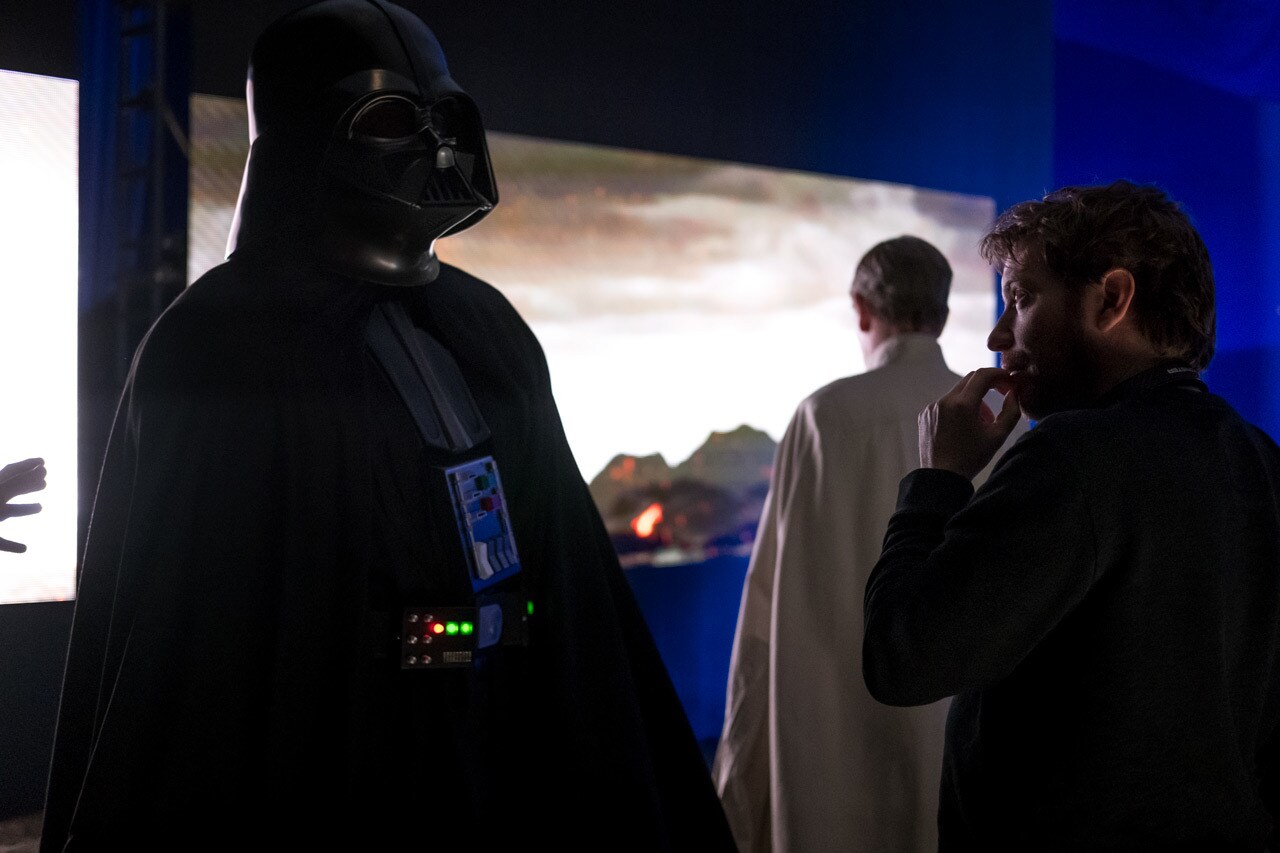
Same with Vader. Even with shots of Vader, we did a little test shoot. Greig would always say that lighting Vader is like doing a car commercial. He’s got more in common with photographing a car than a human because of all the light reflections and things. [Mimics helmet] We kept looking at these tests going, “This doesn’t feel like Vader, does it? What are we doing wrong? It just doesn’t feel the same.” And we started realizing that normally when you do a shot, you do an over-the-shoulder shot, and you film someone and then you do the reverse when you come around for a conversation. You come around. [Mimics camera rotating] In the original trilogy, when they would come around to do the reverse, the person in the foreground would always feel bigger than Vader, which felt wrong. So they always pull the camera back a little bit and then raise it up so that Vader, his eyeline was always the highest thing in the frame. If you didn’t do that, Vader felt small and not powerful. And so it was all these little tricks that we hadn’t thought of until we started failing at certain things.

We lucked out with Guy Henry. He was the actor who played Tarkin for us, with all the dots on his face and everything. When I went to speak with him and meet with him to try to talk him into it, it was a strange request for an actor. You’re basically saying, “Can you be in our movie, but can we replace you with another actor and have nobody know that you did this?” You’d imagine him saying a “what’s in it for me” kind of thing. But he said, “You know what, Gareth? If you’d said any other actor in the history of cinema, I would say no, but Peter Cushing was the reason [I’m an actor].” That actor, Guy Henry, his first role on TV was playing Sherlock Holmes. So he watched all of Sherlock Holmes, Peter Cushing’s version of Sherlock Holmes, and sort of started emulating him in the beginning of his career. It sort of stuck, I think. He’s always held him in this high regard, as well. So we kind of lucked out with him, that he had all the same mannerisms in his performances.
But, really, none of us knew if it was going to work or not until the last couple of weeks. We were still doing VFX reviews, I feel like in the last week before the release, the last possible second. It was really to the wire with all of it.
I always remember the reaction. I thought everyone must know we had Tarkin in this film, they must be waiting for it. Then we were in the premiere and that shot came up where the camera dollies up behind him, and then slowly reveals his reflection, and he turns around. And there was an audible gasp from everybody, and it went quiet. I was really surprised because I was half-thinking, “Why weren’t you expecting this?” [Laughs] Of course we’re going to show him.
StarWars.com: I think what was nice was that I don’t remember him being in the trailers at all. I think that made it really have an impact in the theater when you were watching it.
Gareth Edwards: It’s great when publicity understands there are some things we want to hold back on. I think that really helped that.
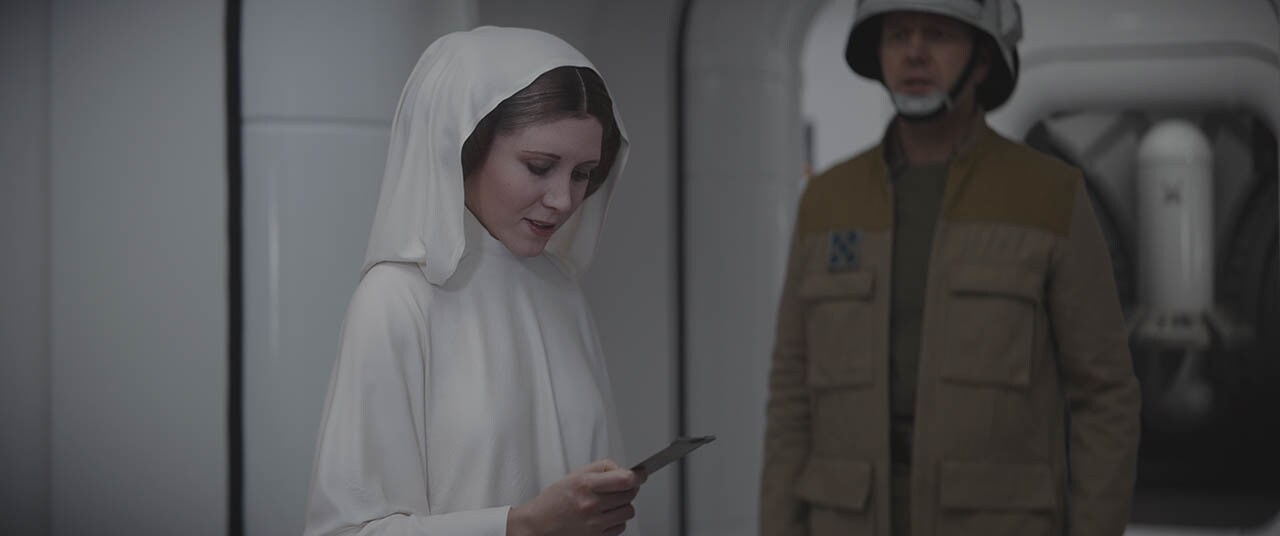
StarWars.com: I was wondering if you ever spoke or met with Carrie Fisher, before she passed, about bringing Leia into it?
Gareth Edwards: No, I didn’t. The closest I got, I got to visit the set of The Force Awakens, and we were hanging out there for half a day or something. I remember being by the trailers and Carrie came out from the makeup trailer, I guess, just brushed right past me to go in. There were a lot of people stood around, so she went just right past me to head on to the set. I remember just, like anyone would, doing a double take and looking at everyone else going, “Oh, my God! That was Carrie Fisher!”
We knew we were going to potentially do this, so I always imagined at some point there would be a conversation to be had about it with her, and it was just who would end up doing that. Kathy [Kennedy] was very friendly with her, so Kathy, essentially, was the one to talk to her about it all. And she was in full agreement and happy about it. So we just carried on.
I always thought, “I guess I’ll get to see her at the premiere or at some point afterwards, and be able to thank her personally.” And obviously that was not possible. It came completely out of the blue.
She is such a hero to everyone. It’s sad that I never got to properly meet her.
StarWars.com: I thought that that added some extra weight to the appearance in Rogue One.
Gareth Edwards: It did. But obviously you’d do anything to have her back, and so it was very sad, but kind of strangely poignant that that moment existed in that film.
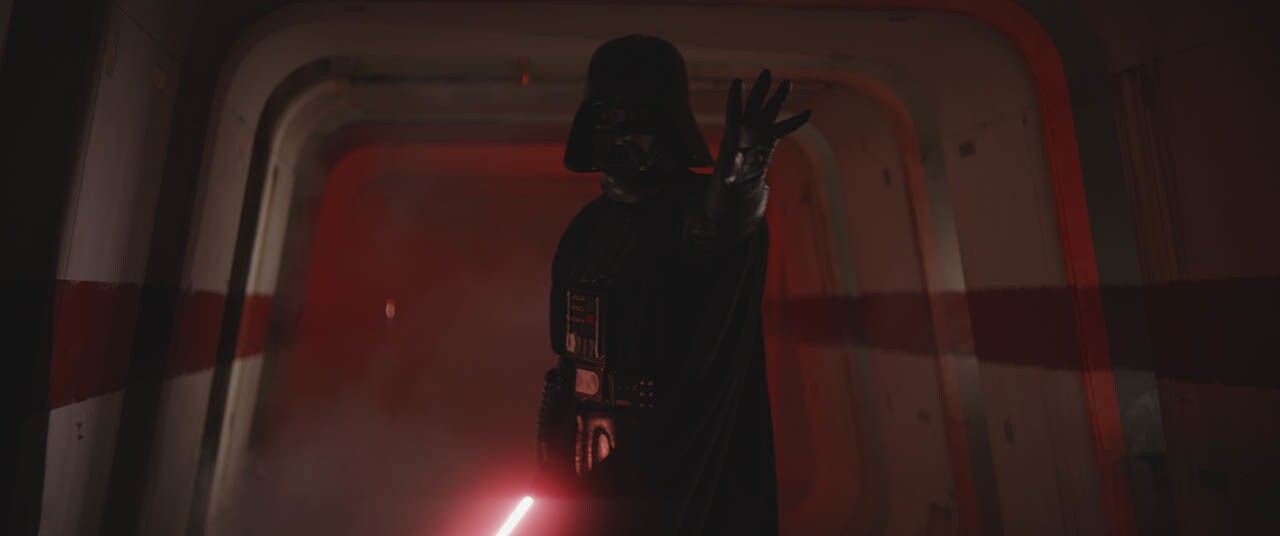
StarWars.com: My favorite sequence, and I know it’s an obvious choice, is the Vader scene at the end as he tears through the rebels. I love the look of it and just how frightening a scene it is. What do you recall about conceiving that scene and taking it as far as you did?
Gareth Edwards: It was a last-minute decision, and credit goes to Jabez Olssen, who was an editor on the film. We always wanted Vader in the movie as much as possible without playing that card too often. At the time it felt like there were some other things in the works, and maybe we should stay clear of Vader a little bit and not abuse that situation.
But as the film progressed it got clearer that this is that story that, if you watch the beginning of A New Hope, he’s obviously very pissed. [Laughs] They have these plans, and he wants them desperately back. It feels like he was very intimately involved in some way in the moments that led to them being stolen. So we were always trying to fit him into the end of the film.
We talked about a lot of different things. Early on, there were all sorts of things suggested, like he came down to what became Scarif and ideas with that. I’ve got to be a bit careful saying these things because fans sometimes start to think you then shot that moment and it was a genuine thing that existed, but it was more like hypothetical conversations about how to use him at the end.
Then, through just the way things just played out, it had sort of slipped by that we didn’t have this T. Rex Jurassic Park moment of the main bad guy coming back at the very end. Jabez brought it up and said, “We should do this. How about if he’s in the sequence that leads to the blockade runner?” And I was like, “Yeah, I’d love to do that, obviously, but we’re just out of time.” So when Kathy came in to look at something, Jabez just brought it up with her, and she went, “That’s a great idea.”
So suddenly we were allowed to do it. It was this last-minute scramble where we all went to Pinewood a few weeks later and were shooting that. It was weird. I felt like, when we were filming it, I didn’t realize how significant it would be in the film. I just thought it was a nice little cherry on top. I really didn’t think it would be what everyone talked about when they talk about the movie. I just thought it was just tying a bow, having a Vader reprise at the end of the story.
But then, as time has passed, it seems to be the thing that most people reference or remember, which I’m very pleased about. But weirdly, when we filmed it -- obviously, there’s Darth Vader in front of you. When he first walks on set you feel like a giddy little schoolboy for about half an hour. And then suddenly there’s stresses of filmmaking -- can you move that light, could you stand over here. What was strange was talking to Vader. Even though it was a stunt guy inside that played Vader, Daniel [Naprous], he was very good. You never see him with the mask off as you’re blocking it out. So it feels like you’re directing Vader. There’s something very strange about that. I felt like I was going to be killed at any moment if I give him some notes. He was going to Force choke me for criticizing a performance or something.
You sort of play out your career in your mind and think, “I’m never going to do anything that significant again where it means so much to me to get to play in that sandpit with Darth Vader at the end of that film.” And obviously, I’ve got my cameo in there, launching the ship.
It really did feel like everything had gone full circle, like the thing that had inspired us as kids. One of the crew members brought his original toy R2-D2 and C-3PO. We put them on the floor of the blockade runner and took a picture, and it was a bit like, “This is where it all began. This is where we all started with filmmaking, technically on this very set.” It was sort of emotional for us. It was a spiritual homecoming, in a weird way.
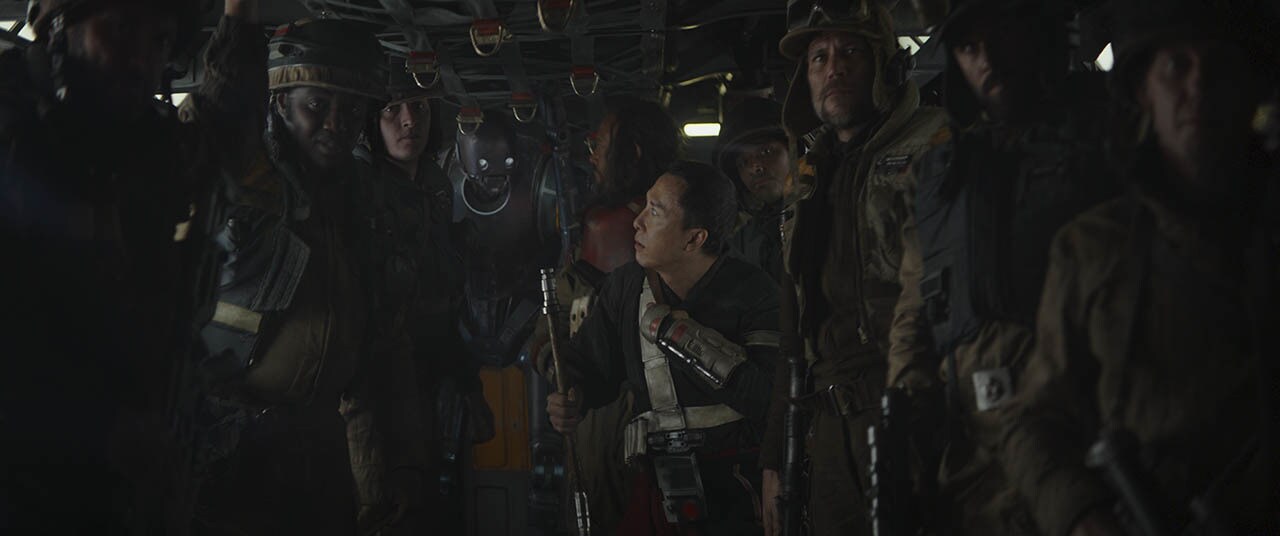
StarWars.com: Fans have latched on to the ragtag crew of Rogue One, and I’m wondering if that has been especially rewarding to see.
Gareth Edwards: Yeah, of course. But I don’t know what that means, because when you make a film, even if you make a terrible film, people come up to you and say, “Oh, that was really good,” because no one is that rude to the filmmaker. So I never believe anyone really likes anything. Do you know what I mean? Like, if someone says some complimentary thing about a film I’ve been involved in, I just feel like they’re being nice. So I can’t really get an objective take on how well Rogue One has done over time.
I’m just glad people don’t seem to hate it. The biggest fear was that we were gonna ruin their childhood by reinventing or baking into canon what they imagined was something else. So I’m more relieved if anything, that people don’t hate the movie, if they’re not shouting at me across the street.
In terms of people liking it, I feel like any compliments I ever hear about it, I just feel like are people being nice to me. I can’t accept it as a reality, really.
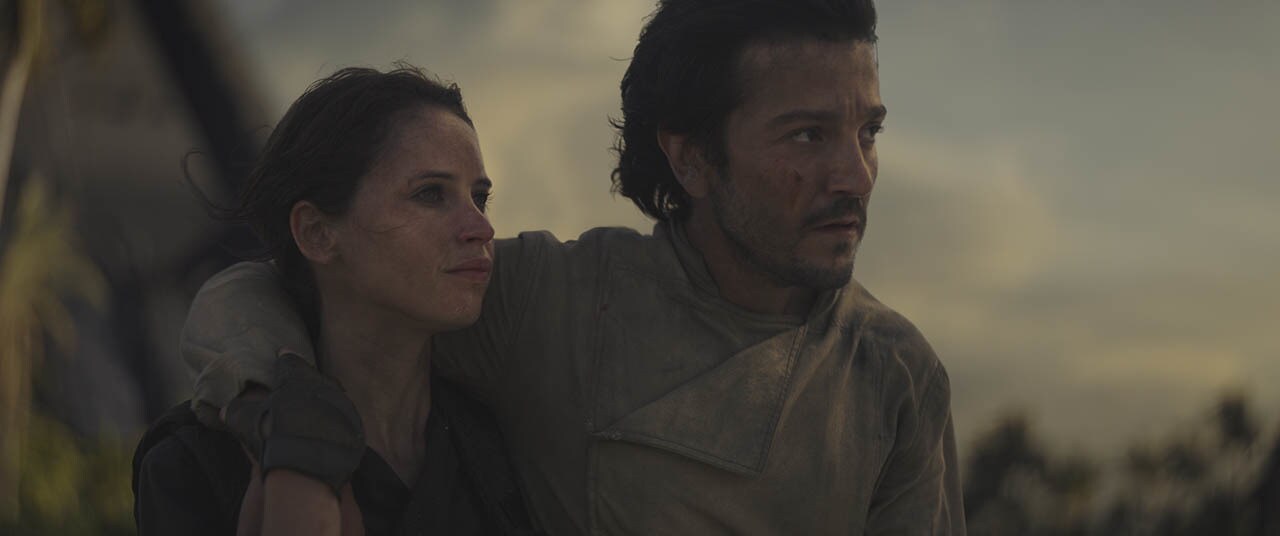
StarWars.com: Do you have any regret of not having the heroes survive to have more adventures down the road?
Gareth Edwards: No, no. I’m really pleased that they all died. [Laughs] As bad as that sounds. They don’t appear anywhere else in the original trilogy, so if they had lived and had any sort of significant story in terms of their lives, it would have been strange for them not to have a fleeting glimpse somewhere in the original trilogy.
What was most sort of surprising is I kept waiting for the decree from above to be, “You’ve got to have some of them live. You’ve got to have this one live, or that one live.”
I remember when [Disney chairman and CEO] Bob Iger first stood out on stage and announced the film, it was some event at some point, and they put up pictures of all the actors. I can’t remember how many there were, there were like eight or nine of them. I remember as he was talking about it and talking about the movie very briefly, I remember just looking at all those faces and going, “I wonder how everyone would feel if he also added at the end, ‘By the way, everyone on this stage you’re looking at dies at the end of the film. All of them will be dead.’” It’s not a very Disney thing to do. So I was really excited that they never, ever brought it up or questioned it. It never became a thing.
And I think it makes it more mythical. Things are more valuable when they only exist for a brief moment, and they’re not something you can always go back to. I feel like the fact that they did all -- those characters came together and then can’t come together again, really, in the same way, probably helped the movie in some way.
It’s hard to think of a big studio film where all the central characters died that’s a family movie. That’s an element that I’m quite proud of, because to be honest it feels true to the subject matter, which is, essentially, war. If we were telling a World War II story about a group of friends or enemies that got together to defeat a common foe, it’s really likely they wouldn’t have made it out alive.
It felt more truthful to have a bittersweet ending where the moral of the story was, “There’s a lot of loss that occurs trying to fight whoever it is and for whatever reason. Think really hard about it before you do it because there’s a good chance you won’t come home.” I’m sort of happy that we have that feeling in the film because I think it’s true. That was quite a deep, dark answer.
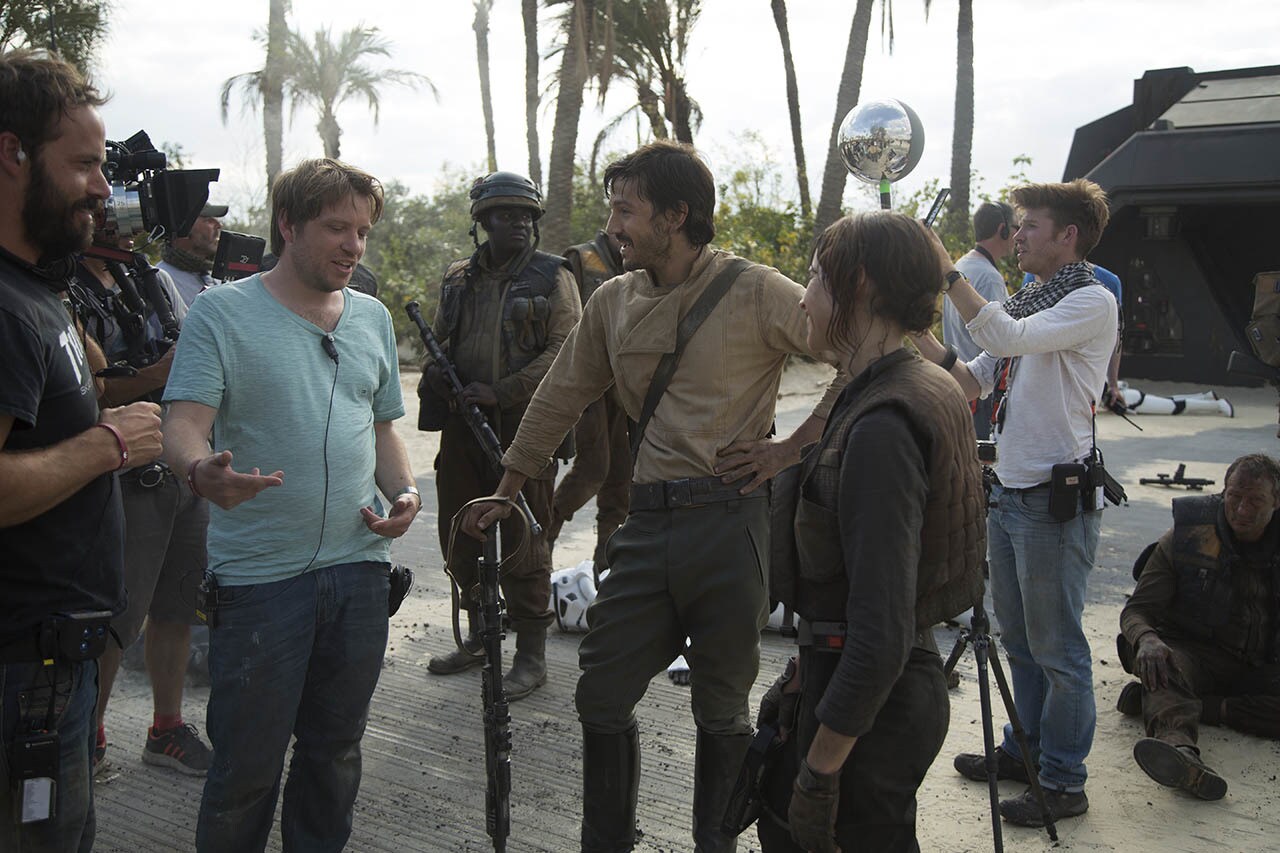
StarWars.com: That’s fine! I think it works for a couple of reasons, which is, the movie doesn’t take the easy way out, but also it ends with the idea that they did this for hope. Leia says it.
Gareth Edwards: Yeah.
StarWars.com: With that, it keeps it very much in line with what Star Wars has always tried to teach.
Gareth Edwards: Yeah, and that’s the dilemma, isn’t it? It’s when, if you don’t take a stand against certain things, those things will win out. And you can’t let that happen, what’s unfolding is such a bad thing for society. Obviously, we have the parallels in Star Wars to World War II and all the terrible things that happened during that, so there are times you have to take a stand.
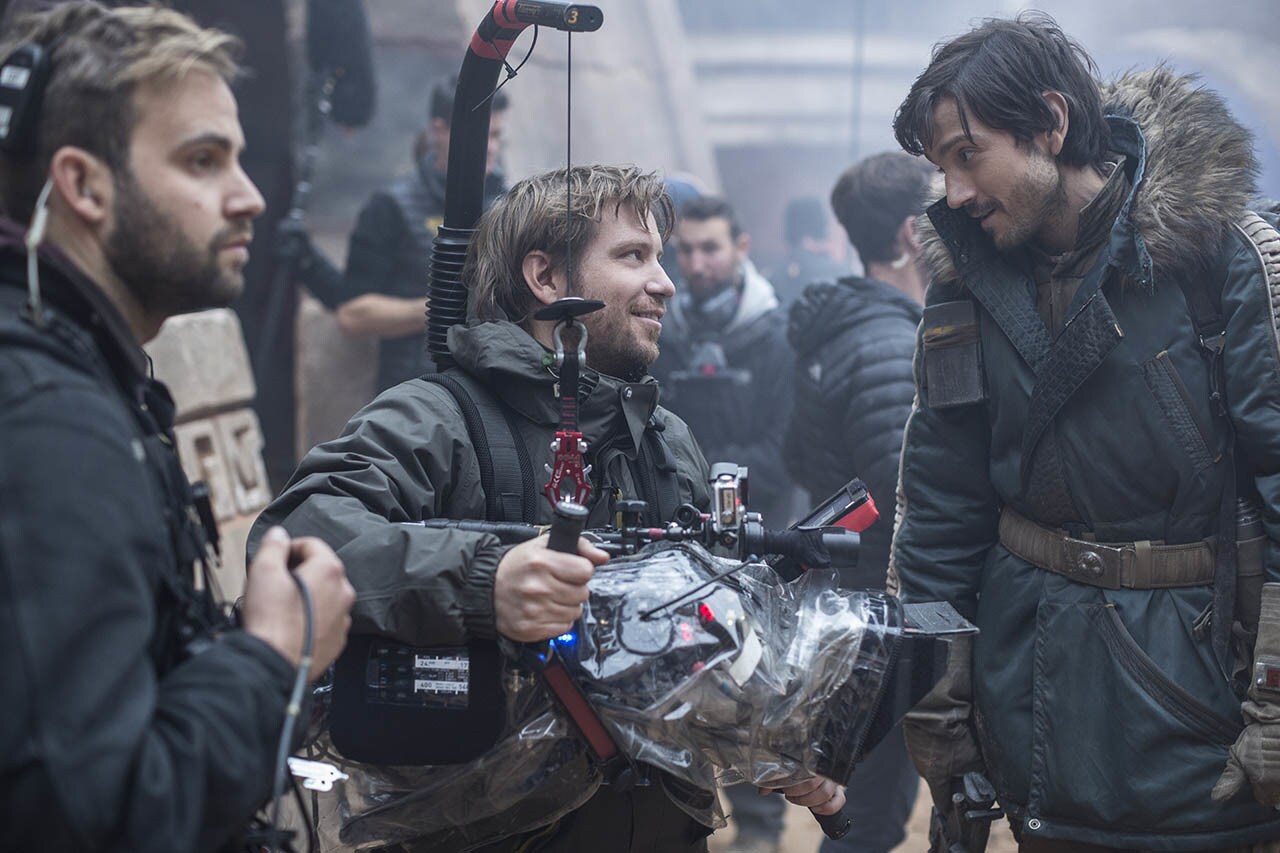
StarWars.com: All right, I guess this is the last question. I’m curious to hear your answer, and no pressure. Would you ever make another Star Wars movie?

Gareth Edwards: Oh, God. I think it’s amazing to be offered it once in your life. It’s like going to the moon. Star Wars is the most incredible franchise ever created, in my opinion, and will always have a special place in my heart. But I feel like I got to climb Everest, you know. I got to land on the moon. And I’m very happy with that. So I need to step aside and let someone else carry on the legacy.
Also doing it, it felt like it was never my film. It was always something we’d borrowed from George. You see the iconography everywhere. Disney has been very good with all the merchandise that came out around all the films. I remember, probably in the late ‘90s as a Star Wars fan, if you wanted to buy a Star Wars T-shirt or bag or a pencil or something with C-3PO on it, you probably couldn’t. In all the shops you’d go in, you wouldn’t see anything, really.
Then in the last few years, you’re getting on a plane and all the kids in front of you have Star Wars bags and T-shirts and coats. You can’t walk down a street without seeing something to do with Star Wars. Every time I see something from our film, like Darth Vader or the stormtroopers or anything, I just feel like, “Well, that’s George.” That’s the original crew and designers that came up with that stuff. And I got to hold the baby for a moment and then pass it on. My main fear was that I just didn’t want to drop the baby, you know?
I feel like maybe the new future of Star Wars is that kind of passing of the torch, rather than one person defining it all. It’s this thing that lots of artists and filmmakers can play with and bring their voice to. Like, we see different versions of that world. I think that’s more exciting. It’s like in the US where you can only be president for two terms. That’s a good thing. I think it’s exciting to have new filmmakers come along and give it a fresh spin.
This conversation has been edited and condensed for clarity.

